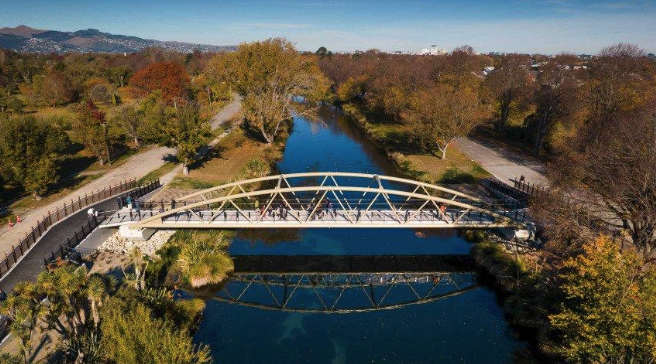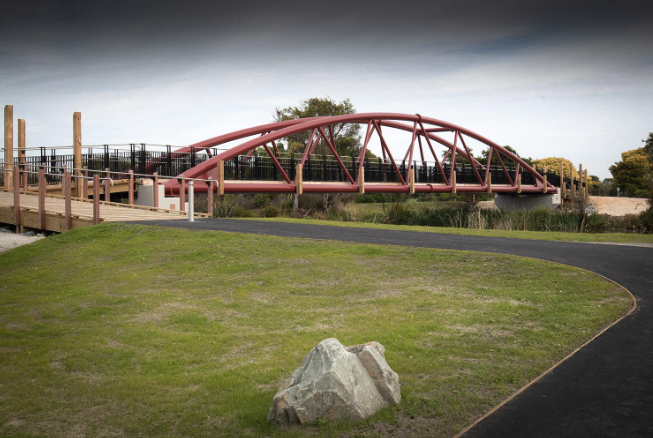 Three new pedestrian bridges in the Ōtākaro Avon River Corridor reinstated valuable community connections that were lost in the 2010-2011 earthquake sequences.
Three new pedestrian bridges in the Ōtākaro Avon River Corridor reinstated valuable community connections that were lost in the 2010-2011 earthquake sequences.
The bridges also encourage people to explore and connect with the 602-hectare former red-zone corridor, as Christchurch City Council begins developing the area into an amazing community asset.
The project
In 2019 the Government signed off on the Ōtākaro Avon River Corridor (ŌARC) Regeneration Plan, which provided an overarching vision, along with short, medium and long-term objectives for future land uses and opportunities for the area.
The Plan placed a heavy emphasis on the connection between people, communities, the river and the land, by providing walking tracks, footbridges, stormwater management areas, as well potential recreational activities.
The Plan also proposed a new 11km City to Sea Pathway and cultural trail that followed the river from the city to coast and celebrated the area’s heritage.
In 2020 the Crown handed the management of the ŌARC land to the Christchurch City Council and work began in earnest to bring the Regeneration Plan to life.
Later that year, and with the help of a $13.7 million grant from the Christchurch Earthquake Appeal Trust, the Council began designing three new pedestrian and cycle bridges, and a riverside community landing.
With the help of community feedback, the bridge designs were finalised and construction began in July 2021.
The Medway Street Bridge is arguably the most high-profile and most anticipated of the three bridges, as it reinstates a pedestrian connection that had been missing since the previous bridge was famously buckled in the September 2010 earthquake.
As a tribute to the history of the area, remnants of the old twisted bridge have been retained next to the new Medway Street Bridge.
 To the east, the Snell Place Bridge follows the same alignment as the old pedestrian bridge that was damaged in the earthquakes. It reconnects Dallington and Avondale, and provides an important connection to and from Avon Park.
To the east, the Snell Place Bridge follows the same alignment as the old pedestrian bridge that was damaged in the earthquakes. It reconnects Dallington and Avondale, and provides an important connection to and from Avon Park.
Further east again, the Avondale Bridge connects the Avondale and Aranui communities with the Donnell Sports Park and the future Eastern Reach wetland restoration area.
While all the bridges have slightly different designs, the geological attributes of the former red-zone land means that the focus is on building structures that can withstand future earthquakes. They are all made from steel truss, with 3 metre wide concrete decks that minimise vibration. They also have sliding and jackable abutments to mitigate lateral spread.
Designers considered Waka Kotahi’s Pedestrian Network Guidance and Bridge Manual, the Council’s Cycle Design Guidelines, as well as the NZ Building Code (particularly Clause D1 Access Routes and NZ Building Code and Clause F4 Safety from Falling) when designing the bridges.
Construction of all three bridges was completed within 10 months, in May 2022.
Since completion, the bridges have proved incredibly popular with the community. The Council’s Parks team has informally recorded a significant increase in the number of people exploring the ŌARC, and using the three bridges to create different walking and cycling routes.
